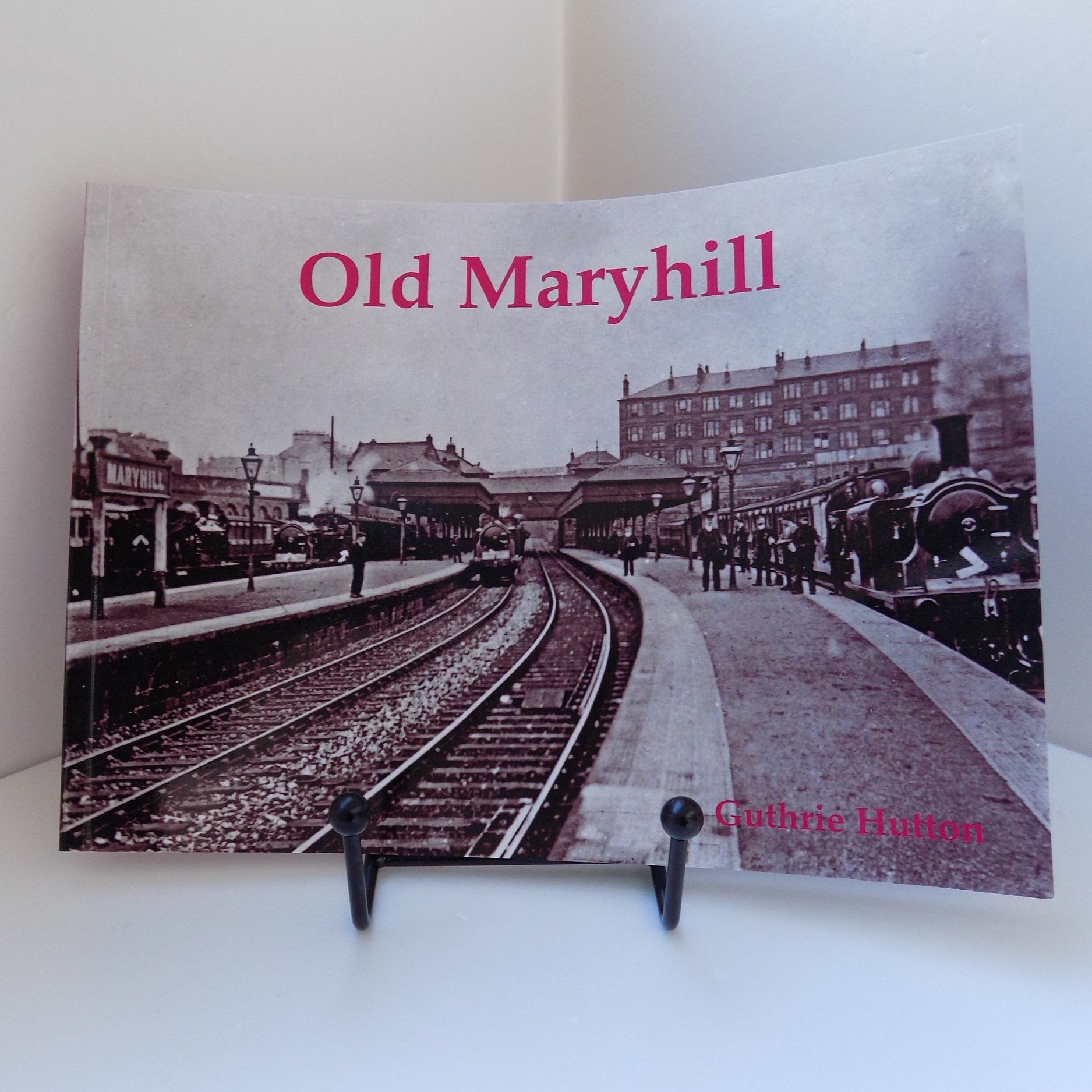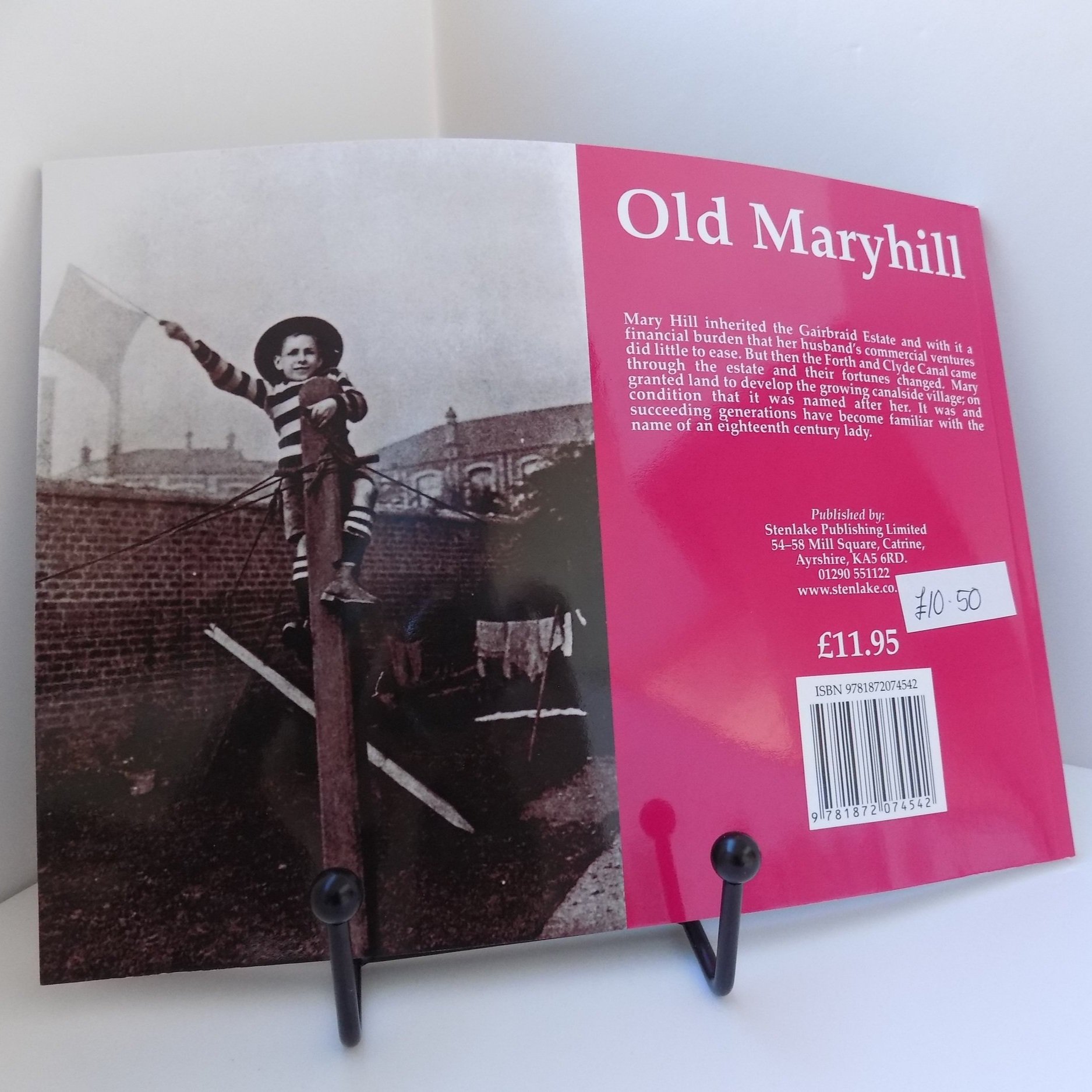 Image 1 of 3
Image 1 of 3

 Image 2 of 3
Image 2 of 3

 Image 3 of 3
Image 3 of 3




Old Maryhill book
Guthrie Hutton's first book on Maryhill offers a fascinating glimpse into the history of this Glasgow neighborhood.
Maryhill is named after Mary Hill, who donated land from her Gairbraid Estate to establish a village, stipulating that it be named in her honor. The construction of the Forth and Clyde Canal was instrumental in the area’s development, attracting industries such as boat-building, saw-milling, and ironfounding.
The book features striking images of the mills along the Kelvin and the former mansions in the area, including Bonville and Garscube House, showcasing a surprisingly rural aspect of Maryhill. In contrast, there are vibrant photographs of Maryhill Road, bustling with trams and shops. Other highlights include a vintage line-up of Partick Thistle, images of lesser-known local football teams, the Bryant and May factory, the barracks, the railway station, picturesque canalside views, and the New Star and Roxy cinemas.
56 pages with many photographs.
Guthrie Hutton's first book on Maryhill offers a fascinating glimpse into the history of this Glasgow neighborhood.
Maryhill is named after Mary Hill, who donated land from her Gairbraid Estate to establish a village, stipulating that it be named in her honor. The construction of the Forth and Clyde Canal was instrumental in the area’s development, attracting industries such as boat-building, saw-milling, and ironfounding.
The book features striking images of the mills along the Kelvin and the former mansions in the area, including Bonville and Garscube House, showcasing a surprisingly rural aspect of Maryhill. In contrast, there are vibrant photographs of Maryhill Road, bustling with trams and shops. Other highlights include a vintage line-up of Partick Thistle, images of lesser-known local football teams, the Bryant and May factory, the barracks, the railway station, picturesque canalside views, and the New Star and Roxy cinemas.
56 pages with many photographs.
Guthrie Hutton's first book on Maryhill offers a fascinating glimpse into the history of this Glasgow neighborhood.
Maryhill is named after Mary Hill, who donated land from her Gairbraid Estate to establish a village, stipulating that it be named in her honor. The construction of the Forth and Clyde Canal was instrumental in the area’s development, attracting industries such as boat-building, saw-milling, and ironfounding.
The book features striking images of the mills along the Kelvin and the former mansions in the area, including Bonville and Garscube House, showcasing a surprisingly rural aspect of Maryhill. In contrast, there are vibrant photographs of Maryhill Road, bustling with trams and shops. Other highlights include a vintage line-up of Partick Thistle, images of lesser-known local football teams, the Bryant and May factory, the barracks, the railway station, picturesque canalside views, and the New Star and Roxy cinemas.
56 pages with many photographs.
